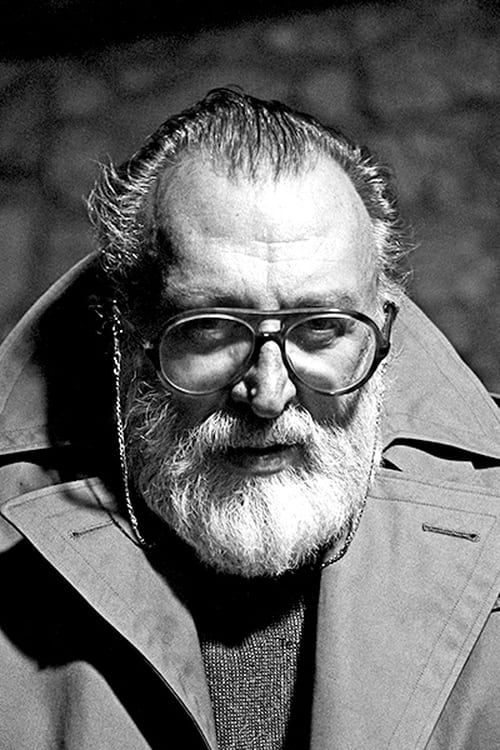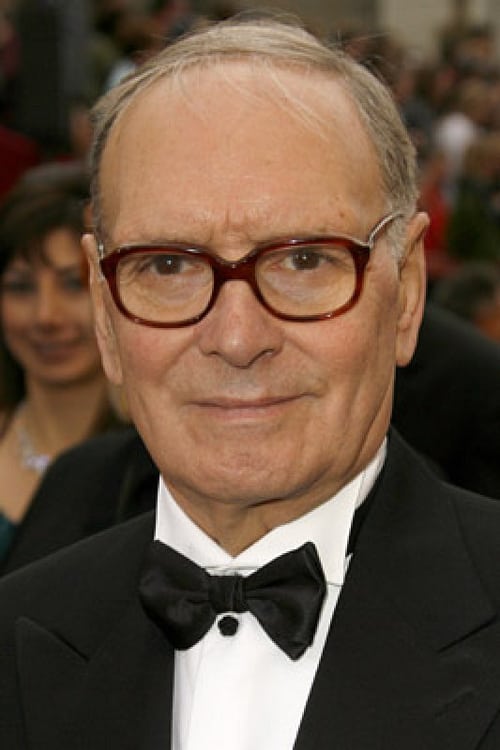Discover
-

Sergio Leone
Director -

John Landis
Stunts -

Antonio Palombi
Production Secretary -

Fabio Testi
Stunts -

Luciano Vincenzoni
Screenplay -

Sergio Donati
Additional Dialogue -

Agenore Incrocci
Screenplay -

Ennio Morricone
Original Music Composer
-
 Peter McGinn
6/23/2021 3:58:46PM
Peter McGinn
6/23/2021 3:58:46PM
I am not a fan of Sergio Leone. In fact, this movie and Once Upon a Time in the West are the only movies of his that I have seen. But I think they are both classic westerns. He seems to bring out the best in his cinematographer, both for scenery and for his characters. In one review I read, he was criticized for staying with facial close-ups too long, and I would probably agree if he populated his movies with beautiful actors and actresses as many films do, but he relies heavily upon actors with interesting faces. Sometimes I feel he relies on too many shootings, and on having his gunfighters be too damn good. Two, four, six opponents? Doesn’t matter, these guys kill them all and come out unscathed. But that is part of the western movie gunfighter mystique. On a different level, I have owned the soundtrack for this movie: The Good the Bad and the Ugly, for close to 50 years. I write novels in my spare time, and I started listening to this soundtrack (plus others like Thunderball) for background music as I wrote. I moved on to Ambient music, such as Brian Eno, but still listen to this album. As a side note, I heard a great version of this movie music on YouTube, performed by the Danish National Orchestra. Check it out. So the movie works for me on multiple levels, and I own a copy so I can watch it any time the mood strikes me
-
 DrewBlack
6/23/2021 3:58:51PM
DrewBlack
6/23/2021 3:58:51PM
There is one word to define The Good, The Bad and The Ugly. And that word is “transcendent”. This movie is not only the pinnacle of the Spaghetti Western, but it transcended into the pinnacle of the Western genre in itself. It’s safe to say it transcends that too, and can be considered one of the greatest pieces of filmmaking ever. It counts with memorable performances by three different leads, a story that breaks the “black and white” concepts of morale, and an original score that can only be defined by the word “epic”. Directed by the man responsible for the revitalization of the western in Italy, Sergio Leone, the film does an incredible job of introducing every character, and showing each and every one has a dubious concept of moral values. “The Bad”, Sentenza, or Angel Eyes (Lee Van Cleef), is shown to be a ruthless, greedy gun for hire, but also someone who lives by the mantra of always getting the job done. “The Ugly”, Tuco, is a greedy backstabber, but he is also a man who comes from an extremely poor environment and family conflicts, showing a bit of determinism in the film. “The Good”, Blondie (Clint Eastwood) is not much better himself. While he is surely the less greedy one, he also has no problem with killing and backstabbing other people. To put it in perspective, he is ironically announced as “The Good” right after abandoning a man to die in the desert. The story follows all these three personalities as they engage in their particular gold rush: a buried treasure that is hidden in a cemetery. In order to find it, they must form an uneasy alliance, while trying to outrun each other, and claim the prized gold alone. All of this while the Civil War happens around them. The performances are nothing short of amazing. It goes to show the range that Lee Van Cleef had once this villainous role is compared to his work in the previous installment of the trilogy, For a Few Dollars More, as a heroic, friendly and almost fatherly figure. His presence is as intimidating as ever, and one of the best he has given in his lengthy career. Eastwood is as eye-catching as one would expect: his deep stares and lines delivered in a whispery, yet gravelly voice, defined The Man With No Name. But the best of the bunch has to be Eli Wallach. His comedic timing is as precise as any bullet shot in this film. But the most outstanding part of his characterization is that while he is extremely funny, he also manages to be a credible threat for the “hero”, Blondie. The original music score for this film deserves a whole book just to talk about it, and it still wouldn’t do it justice. It’s simply a lesson by the maestro, Ennio Morricone, on how music can change a film. Thanks to a track such as L’estasi dell’oro (The Ecstasy of Gold), a man running around a cemetery becomes one of the most epic scenes ever made. Thanks to a composition such as Il Triello, three men staring at each other, pondering their options for almost seven minutes straight, becomes tense enough to have the viewer on the edge of its seat. There is simply no other way to put it: Morricone crafted one of the best scores in this art’s history. At the end of the day, The Good, The Bad and The Ugly is more than just a great western film. It’s a show of great acting, writing, directing and music scoring. It’s a real once in a lifetime classic, that has been around for a long time, and not aged a little bit, and will still be talked about for generations of cinephiles to come. To conclude, all I can say is… There are two kinds of people, my friend. Those who have watched this film, and those who have not. You watch.
-
 Filipe Manuel Neto
6/4/2023 7:47:25PM
Filipe Manuel Neto
6/4/2023 7:47:25PM
**One of the best, most famous and most iconic Westerns ever. More than a classic, it's mandatory.** I'm not an expert nor do I want to sound like one, but I think this is one of the most famous western films ever made, despite being shot by an Italian director and being more European than American. Sérgio Leone was one of the most notable directors of his time and he left us, in this film, one of his masterpieces. This is one of those movies that is almost perfect. Problems and failures are scarce and reside in minimal details that end up not making a big difference in the overall work. The story was very well written and takes place in the midst of the American Civil War, a time when violence was part of everyday life. In this environment of violence and mutual distrust, two men are looking for a treasure buried in a cemetery: the problem is the fact that each one knows only part of the location (that is, one knows the location of the cemetery and the other knows which grave it is) and there is a third man, a fearsome assassin, willing to do anything to take all the gold. For this film, Leone put together a very reasonable cast, mostly European, and three great North American actors with enormous talent: Clint Eastwood, Eli Wallach and Lee Van Cleef. I believe that they knew how to make the most intelligent and skilful use of this film, giving us a truly remarkable job. For this three actors, this is the best cinematographic work of their career, or one of the best, consecrating them as great Western movies actors. The film, however, seems to give Wallach more and better opportunities. While watching it, I got the feeling that he is the actor who receives most attention and best material, in addition to having known how to improvise at the right moments and in creative and intelligent ways. The film has great visual beauty, emphasized by the cinematography, the filming work and the good choice and design of sets and costumes. At a time when the correct period recreation was something that cinema sometimes blatantly ignored, this film did the opposite, giving us a realistic and believable vision of the past and placing the film in a specific place and time. I'm not saying it was a one hundred percent successful effort, but it was definitely a decisive step in the right direction when it comes to period films. The special effects and visuals are excellent, the best there was then, and the whole film has an epic, grandiose, expensive feel. It is also very long, with almost three hours in length, but it is worth not being afraid or giving up on because of that. Being a Western film, it is quite evident that there is a lot of violence, so it is not a film for children. Even so, it is not gratuitous violence. Finally, we owe Ennio Morricone a salute for the excellent soundtrack he composed. Among his vast work, this is not my favorite nor the best, but it is undoubtedly one of the most recognizable and iconic pieces, a work that we know, even without having seen this film, and that has become part of our collective memory. We can't ask for more than that.







Clint Eastwood
BlondieTony Di Mitri
Deputy (uncredited)Lee Van Cleef
Sentenza / Angel EyesEli Wallach
Tuco RamirezRada Rassimov
MariaMario Brega
Corporal WallaceAntonio Palombi
Old Sergeant (uncredited)Luigi Pistilli
Father Pablo Ramirez